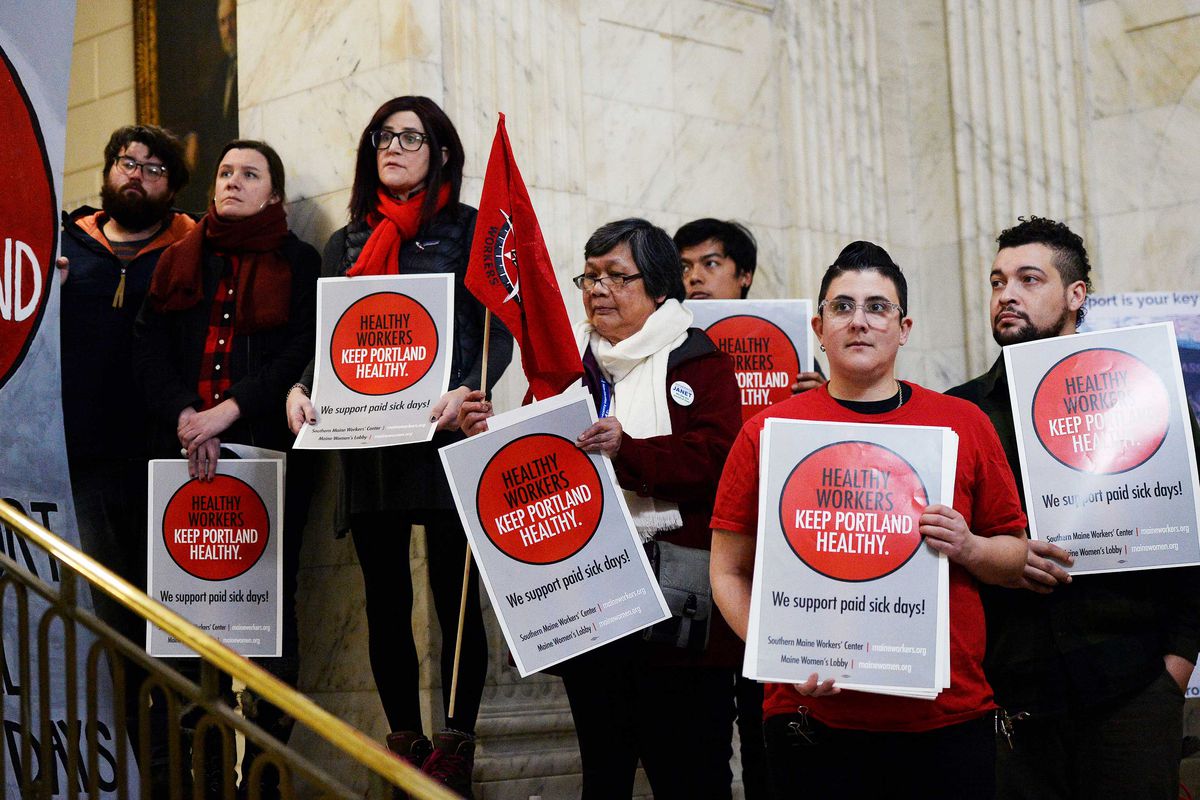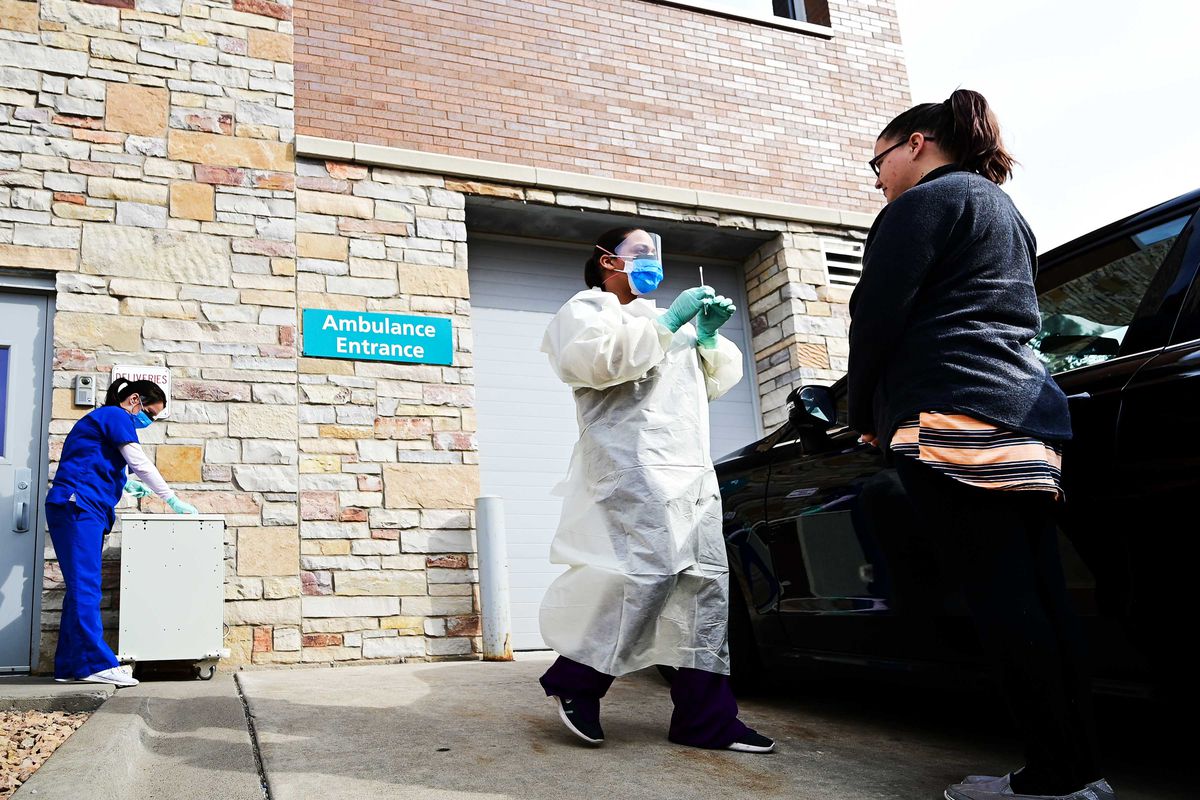As coronavirus fears sweep the nation, people are taking cautionary measures against the disease it causes, Covid-19. These include working from home, stockpiling food, and visiting doctors over any possible symptoms. For many from low-income immigrant communities, however, these precautions and accommodations are essentially luxuries, making them particularly vulnerable during the pandemic.
So far, the federal government has taken some action to provide support to these groups. In the most recent $ 8.3 billion coronavirus funding bill that passed, Congress promised to allocate $ 100 million toward community health centers that treat underserved groups. In addition, Reps. Diana DeGette (D-CO) and Donna Shalala (D-FL) introduced a bill on Tuesday to waive testing fees — which can add up to hundreds of dollars — for all Americans with insurance.
However, the problem is many low-income immigrants do not have health care to begin with. While only 8 percent of citizens are uninsured, that number rises to 23 percent among immigrants with legal status, according to a 2019 report from the Kaiser Family Foundation. Meanwhile, among undocumented immigrants, uninsured rates further jump to 45 percent.
It doesn’t help that the Trump administration’s public charge rule, which makes it harder for immigrants to obtain a green card when they receive government benefits, went into effect two weeks ago. The rule discourages immigrants from using Medicaid, and potentially leaves these people without access to affordable health care — which is particularly dangerous during times like this.
“Epidemics don’t discriminate,” Louise McCarthy, president of the Community Clinic Association of Los Angeles, told Vox. “They don’t discriminate based on your documentation status, based on your income, or anything — and health care shouldn’t discriminate, either.”
Health coverage isn’t the only obstacle that low-income immigrants face, either. A language barrier makes it difficult for them to access information on prevention, testing, and quarantine guidelines. The cost of testing — and the potential of missing work to self-quarantine without paid sick leave — make it nearly impossible for them to report their illness. Then there is the fear of revealing their citizenship status, which can prevent them from visiting any hospitals.
With the federal government barely acknowledging low-income immigrants’ struggles during this outbreak, support has mainly come from states, local community clinics, and organizers, according to Edgar Chavez, CEO of the Universal Community Health Center in Los Angeles. It’s mostly fallen on their shoulders to quell anxiety over a public health crisis, provide accurate information on prevention in multiple languages, and offer adequate health care for little pay, he added. Even then, it’s not enough to provide immigrant communities the support they need during epidemics like this, as resources remain scarce and misinformation runs rampant.
“It’s a ripe situation for us to have an outbreak in the underserved community because they’re not coming in to get the proper information or even properly diagnosed,” Chavez told Vox.
For many low-income immigrants, prevention and testing of Covid-19 isn’t something they can take for granted. Although Democrats hope to pass a bill waiving testing fees for insured patients (and some states like New York and California have already made efforts toward this), it hasn’t happened yet. At HuffPost, Michael Hobbes reported that testing alone cost $ 250 at Seattle’s University of Washington Medical Center for uninsured people. And Chavez told me that uninsured patients must pay about $ 100 to $ 200 in California. For those below the poverty line, that’s money they can’t spare.
“If you think about it, $ 100, $ 200 could mean ‘I’m not going to buy groceries for the next two weeks’, or ‘I can’t pay my phone bill’ or whatever it is,” Chavez said. “So people are going to have to make those very tough decisions.”

There’s also the issue of rigid workplace environments that prevent immigrants from reporting their illnesses, Shannon McConville, a senior research associate at the Public Policy Institute of California, told Vox.
Many low-wage jobs in retail and service industries fail to provide sick paid leave (only 27 percent of people whose wages are below the bottom 10 percent have sick paid leave, according to the Economic Policy Institute). And for those living paycheck to paycheck, it’s difficult to voluntarily take time off when a week’s wages could make a difference in their ability to pay rent.
In such situations, workers have little choice but to continue working despite the risk of spreading the disease to others. And it doesn’t help that these people have jobs that are in close contact with customers, putting them at high risk of both contracting the disease and spreading it to others, she added.
Then there is the fear surrounding citizenship status that is driving immigrants away from seeking the appropriate help they need. Some reports show that undocumented immigrants are more likely to shy away from health care facilities in fear of being reported, even though community clinics are seen as safe spaces that do not ask for citizenship status, according to McConville.
It’s a grim reality that McCarthy has seen in her clinics in Los Angeles as well: “Unfortunately, we’re living in an era of fear, where our federal administration has taken steps through various policies and regulations to instill fear in immigrant communities — either that they will be deported, or that if they use services, they will not be eligible for citizenship. And I’m talking about documented and undocumented alike.”
Immigrants’ fear surrounding seeking medical assistance has been further fueled by the Trump administration’s public charge rule, which went into effect on February 24. Because the rule makes it harder for immigrants to obtain a green card if they’ve sought government help — which includes any form of government health care — people had been dropping out of Medicaid as the Covid-19 cases began to surface in early March, according to Jorge Baron, executive director of the Northwest Immigrant Rights Project based in Seattle.
Although it’s too early to calculate the actual consequences of this rule, the Kaiser Family Foundation reported that one in five adults from low-income immigrant families expressed fear of enrolling in public benefit programs because it could risk their chances of getting a green card.
“I’ve literally had people ask me the question, like, ‘I came to this event because I was I was thinking of this disenrolling my children from the state health insurance plan for children.’ And then another mother who said, ‘I already disenrolled my kids,’” he said. “These kinds of situations are things that this rule has led to — this fear.”

Yet the federal government has done little dispel these fears, said Chavez. Because a majority of his patients are from low-income immigrant communities — 64 percent of his patients are under the 100 percent poverty line — it’s mostly been his job to educate them about their health care rights and proper hygiene.
“We’re trying to give them as much as we can like a safety blanket, letting them know that we’re here if they need us, we’re going to see them, we’re not going to close our doors,” Chavez said.
These community clinics are often seen as trusted within local immigrant groups and provide services in people’s native languages, which is why their education methods are so effective. The Fenix Family Health Center in Lake County, Illinois, for example, exists to support underserved Spanish speakers without insurance. There’s been a growing number of patients coming in with concerns about Covid-19, the facility’s physician assistant Brandon Berkley-Vigil told Vox, and his main role has been to quell their fears and teach them how to prevent the disease.
“A lot of people tend to come to us in the office first before going to an ER,” Berkley said. “And we’re really on the front lines, especially in minority communities where speak their language.”
Clinics are also getting creative in their outreach efforts. When the Academy of Medical and Public Health Services — a member of the New York Immigration Coalition (NYIC) that serves mainly Filipino and Chinese immigrants — realized that its clients were being flooded with misinformation, the group began to reach out with information via WeChat, which is a popular mode of communication within the community. The group has been translating official government responses to Covid-19 in Mandarin and Tagalog to ensure that they get the most accurate updates possible, according to Seongeun Chun, senior manager of health policy at NYIC.
Help also extends beyond just providing information about Covid-19. Doug Olson, a practitioner in Connecticut and vice president of the Association of Clinicians for the Underserved board of directors, said his community clinics also connect patients with necessary resources, such as food and diapers, as people begin to stockpile in preparation of the outbreak escalating. Some even have modestly sized food banks located within the health care facility to provide more direct aid, he added.
“When you see mayors and governors send out email communications to people who live in this city and say you should prepare for potential escalation of Covid-19 and make sure that you have both medication and food supplies that are on hand for a month just to be on the safe side,” he said, “there’s a lot of people that are part of the ACU membership that have never had food for more than three days. I don’t think [these officials] realize what they’re saying.”
There’s only so much these clinics can do, however, without further support at the federal level. Their No. 1 request: test kits. By having established trust with their clients, these community clinics could help expand the reach of the testing. Yet most local clinics do not have access to test kits, as there is a nationwide shortage. Even those that are lucky enough to obtain a few, such as Chavez’s Universal Community Health Center, haven’t been able to use them because the bar for testing is so high.
Community clinics could make a huge difference for underserved communities if the government would guarantee doctors are provided ample support and testing supplies, Chavez said.
“If you tell that to the community clinics, oh my god, the floodgates would open and we would start testing a whole bunch of people,” Chavez said. “Or we could be a resource, so that the county clinics do not get overwhelmed with all of these cases.”
